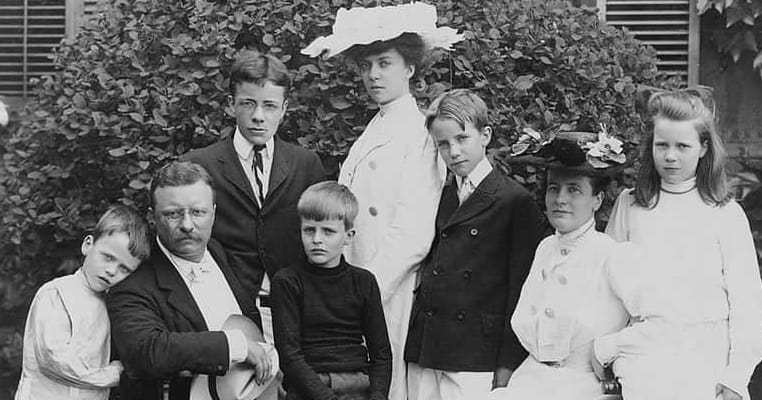It is fitting indeed that one of the massive granite heads looking out over the Black Hills from Mt. Rushmore is a likeness of Teddy Roosevelt. Everything he did was bigger than life. He was a soldier, a writer, and a cowboy. He hunted big game in Africa and explored the Amazon, in both instances narrowly escaping with his life. He expanded and modernized the US Navy and sent its Great White Fleet around the world to enhance American prestige. He was a President, a Vice-President, a Governor of the State of New York, an Assistant Secretary of the Navy, a Nobel Prize winner. His leadership ensured the Americans would complete the Panama Canal after the French failed in the effort.
He championed the people over big business, was a leading conservationist who expanded the National Park System, pushed for government monitoring of America’s food. From a sickly youth he grew to represent strength and vigor in a way no preceding American President had. As a Police Commissioner of the City of New York rather than remain in his office he often walked a beat, carrying a nightstick. When USS Maine was destroyed by an explosion in Havana Harbor in 1898, it was Roosevelt who secretly sent orders to America’s naval squadrons, ensuring the ships were coaled, ammunition bunkers fully ready for war, actions which contributed to the victory over Spain.

Here are ten things you may not know about Theodore Roosevelt.

His mother and his first wife died on the same day in the same house
Teddy Roosevelt was 22 and a graduate of Harvard when he married his first wife, a Massachusetts socialite named Anne Hathaway Lee. Although Roosevelt was a member of a wealthy and distinguished New York family, and a classmate and friend of her cousin, Richard Saltonstall, she maintained her distance from the young and brash New Yorker for some time. They were introduced in the Saltonstall home, next door to her parent’s home, in the autumn of 1878. The following June Roosevelt proposed marriage. She made him wait eight months for her reply, but at least it was affirmative.
They were married on October 27, 1880, the groom’s twenty-second birthday. His bride was but nineteen. Rather than embarking on a long honeymoon the couple visited the Roosevelt family retreat at Oyster Bay before taking up residence with Teddy’s mother in New York. Teddy’s mother was Martha Stewart Bulloch Roosevelt, herself a socialite before marrying Teddy’s father. She was known to the world as Mittie. According to historian and writer David McCullough Margaret Mitchell used her as her inspiration for Scarlett O’Hara.
Mittie had been widowed by the death of her husband and Teddy’s father, Theodore Roosevelt Sr. in 1878. As the eldest son in the customs of the time it was Teddy’s responsibility to look after his mother. He and his wife enjoyed New York society in the City, and made a belated honeymoon trip to Europe before relocating to Albany in 1882, where Teddy was serving in the General Assembly. Both Anne and her husband hoped for several children and when she became pregnant she returned to the Roosevelt home in New York City while he remained in Albany to conduct state business, and to purchase an estate at which to raise their family.
Anne became pregnant in 1883 and was expected to deliver in February of 1884. Teddy believed that the baby would be born on Valentine’s Day. He was wrong, the baby girl whom they named Alice Lee Roosevelt was born two days earlier. Shortly after, Roosevelt received a telegram informing him of both his mother’s and his wife’s illnesses. Mittie was suffering from typhoid fever. Roosevelt arrived home about midnight of February 13 by which time his wife was wavering in and out of consciousness. His mother died around three in the morning of February 14.
Anne remained in a semi-coma for most of the day, with her husband at her side, before dying during the afternoon of Valentine’s Day. While deaths from childbirth were not uncommon, it was revealed that Anne had been suffering from a form of kidney failure and her pregnancy had masked the symptoms. Teddy Roosevelt was 25 at the time, a widower with a wife and a mother to bury, and a two day old infant daughter to care for. Roosevelt was devastated, later writing, “…the light went from my life forever.”

